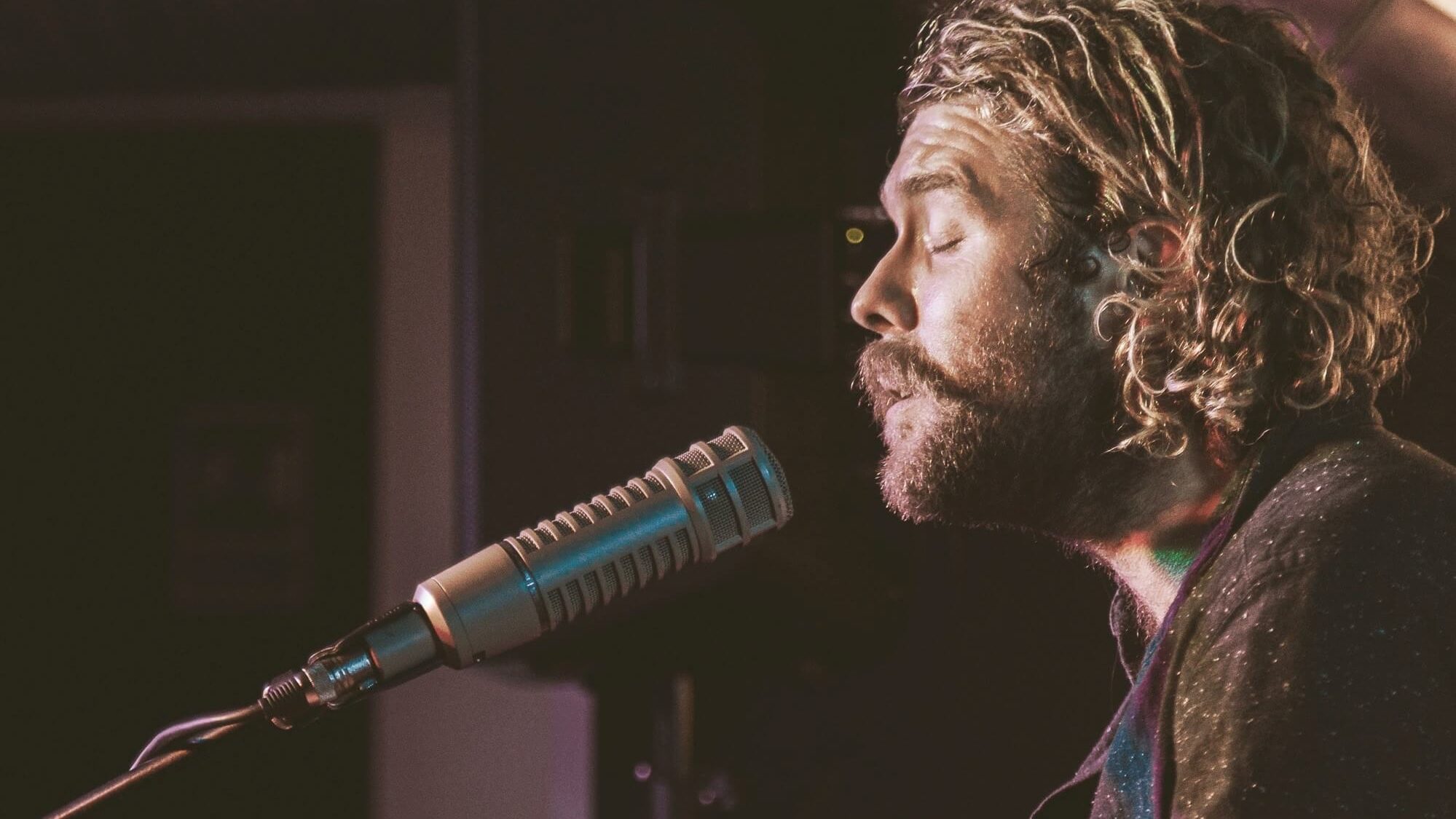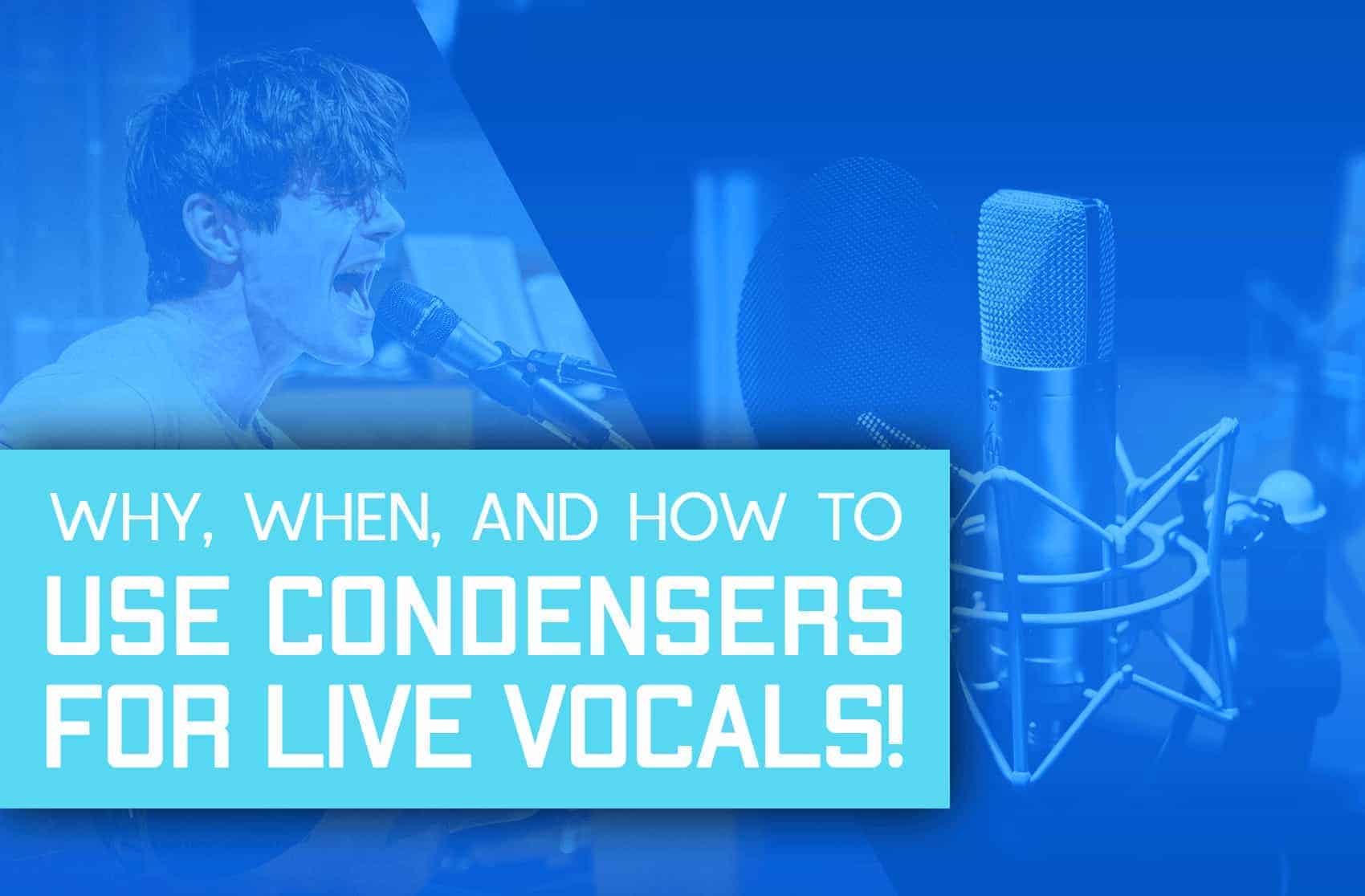The vocals are the centerpiece of most popular music. Most regular listeners and audience members fixate on the vocalist’s performance. A singer’s voice is one of the most important sonic aspects to nail down, not only in the studio but in live settings as well.
Beyond the obvious components of technique and quality performance, many amateur recording artists and producers may overlook the importance of what mic they chose to use.
The most popular mic types are dynamic and condenser.
The age-old school of thought is that condensers are better suited for detailed studio sessions, whereas dynamic mics are the go-to’s for live performance.
If you’re still not completely aware of these different types of mics and why, where, and when you should each one, check out this article that I’ve written where I outline all the differences between them, each one’s pros and cons, and the specific situations where you should probably go against your instincts.
While dynamic mics, like the legendary Shure SM58, have been live mainstays for singers for a long time, it is becoming more common for condensers to play a very valuable role in certain live situations.
Let’s dive into these fantastic mics and how you can bring some new, unique coloration to your live vocal sound.
For the purposes of this article, we’ll be focusing on large-diaphragm condensers, specifically, as these are typically the ones used for vocals. From here on out, when I refer to “condensers”, go ahead and add in “large-diaphragm” in your head!
Small-diaphragm condensers are typically more common for acoustic instruments and more intimate classical ensemble performances.
Why Should You Use Condenser Mics For Live Vocals

First, we have to discuss the inherent differences between dynamic and condenser mics, and why condensers have value.
One reason why producers use condensers in the studio is to capture the fine details of a performance. The inner design of the condenser mic diaphragm is largely to thank for this.
The electrically charged diaphragm within each condenser allows it to vibrate at a proportional level to the incoming soundwaves of the singer, resulting in an equally robust signal to be sent into the audio interface. Nothing is lost to the ether.
What does this mean? We can then capture a much wider range of frequencies, including quieter, more delicate sounds.
If you are working with a particularly expressive singer, condensers are simply perfect at capturing the subtleties of his or her performance.
They also capture higher frequencies quite well.
Whether you want to capture some demonic, baritone bellowing, or angelic falsettos, condensers are the way to go.
Condensers also make you want to sing! They shape the incoming in a very pleasing way to the ear. Many vocalists simply prefer hearing themselves back while singing through a condenser.
These fine details work wonders in the studio. So we should all start using condensers, right?
Well, as usual, it all depends on a number of details. Why should it be simple?
When Should You Use Condenser Mics For Live Vocals

Condensers are hailed for their very sensitive response and ability to handle an extended frequency range.
However, their sensitivity makes them vulnerable to harsh transients and excessively high decibel levels. Hard Rock and Metal bands with aggressive vocals and a wall of distorted guitars may prove overwhelming to the more delicate condensers.
In those cases, stick with a solid dynamic mic that can handle less subtle vocal techniques like screaming, belting, and growling.
That being said, if you’re a folk band or perhaps even a progressive rock band, traversing multiple genres and vocal styles (hello Mike Patton), you could benefit from the extended range capabilities of condensers.
One must also take into account the elements and the grind associated with putting on a show. The more intricate design of condenser diaphragms makes them susceptible to humidity, (sweating singers), excess heat, and the dreaded fumble and drop!
You DO NOT want to drop one of those bad boys. It will burn a hole in your wallet!
If you are a touring musician and need a dependable, sturdy mic to weather the road with you, condensers may be a risk. If you sing at coffee houses or small venues, requiring minimal set-up, condensers can be a real option to give your vocal performance an edge live.
Better yet, if you have a dedicated rehearsal space where you spend most of your time, you can just keep a condenser permanently set up to your specifications, minimizing excess handling and transporting.
Your mic decisions may vary from venue to venue too. At the end of the day, it comes down to a mixture of personal sound preference, travel logistics, and, of course, budget.
For each setting, ask yourself, “Does the sound reward outweigh the risk?”
How To Use Condenser Mics For Live Vocals

Let’s talk about how to set yourself up for success with live condenser mics.
First, we must think about our singing technique. Obviously, if you’re a pro, you are probably at the point in your career where you take a portion of your technique for granted. It’s muscle memory.
However, there are some important things to consider when singing into a condenser, especially during your first few performances.
Keep a distance of 6-12 inches from the mic.
As mentioned earlier, these mics are extremely sensitive and handle a large frequency range compared to dynamic mics.
If your mouth veers too close to the mic, you could dredge up unwanted bass response in the lower frequencies. Such frequencies can overpower the subtler elements of your performance.
If you stand too far from the mic, though, you make room for nasty feedback gain from the surrounding monitors.
And while we’re on the topic of feedback …
You may also want to make sure any bass instruments aren’t too high in the live mix. The singer’s mic may pick up the run-off bass response and similarly muddy up the soundwaves heading into the mic.
Minimize feedback from the PA monitors into the mic.
I don’t know if you are aware, but live music can often be loud, especially if you have a big room and guitars that need to compete, volume-wise, with acoustic drum kits.
Often this means blasting the PA volume to fill the room and envelope the audience. It’s often part of the live music experience.
The PA speakers are in the same room as the mics! How do we avoid harsh feedback from the PA?
If possible, choose cardioid condensers over omnidirectional ones. Omnidirectional mics take in sound from all around them. This can be a nightmare for feedback noise. Cardioids are unidirectional.
Not only do they solely take in sound from the front. They also nullify any sound waves coming from the rear.
That at least will minimize any excess feedback from the fold-back monitors and front-of-house PAs.
Cardioids also pick up far less ambient, bassy sounds from the vibrating stage floor or mic stand. Score!
There are super cardioid mics and these take the above feedback-blocking benefits to the next level. However, these mics require the singer to be extremely consistent with their positioning, relatively to the mic.
Such stern, robotic parameters probably won’t suit the often loose energy of a live performance. Most Rock frontmen like to move around while performing.
Super cardioids are probably best left for that in-studio meticulousness.
Conclusion
Pick your poison. As with many issues regarding gear, your mic choice is a matter of personal preference.
There is nothing wrong with sticking to your trusty SM58. However, if you have been jonesing for a change and maybe a little more color to your voice, consider giving a condenser a shot.
With all gear, there are so many brands and styles of condensers to try out. Go to your local music store and fiddle around. Find what sounds good to your ears.
It’s even better if you can test one within the context of a live band performance. But this isn’t always possible.
Don’t overthink it. You’re an artist. IF IT SOUNDS GOOD, IT IS GOOD!







